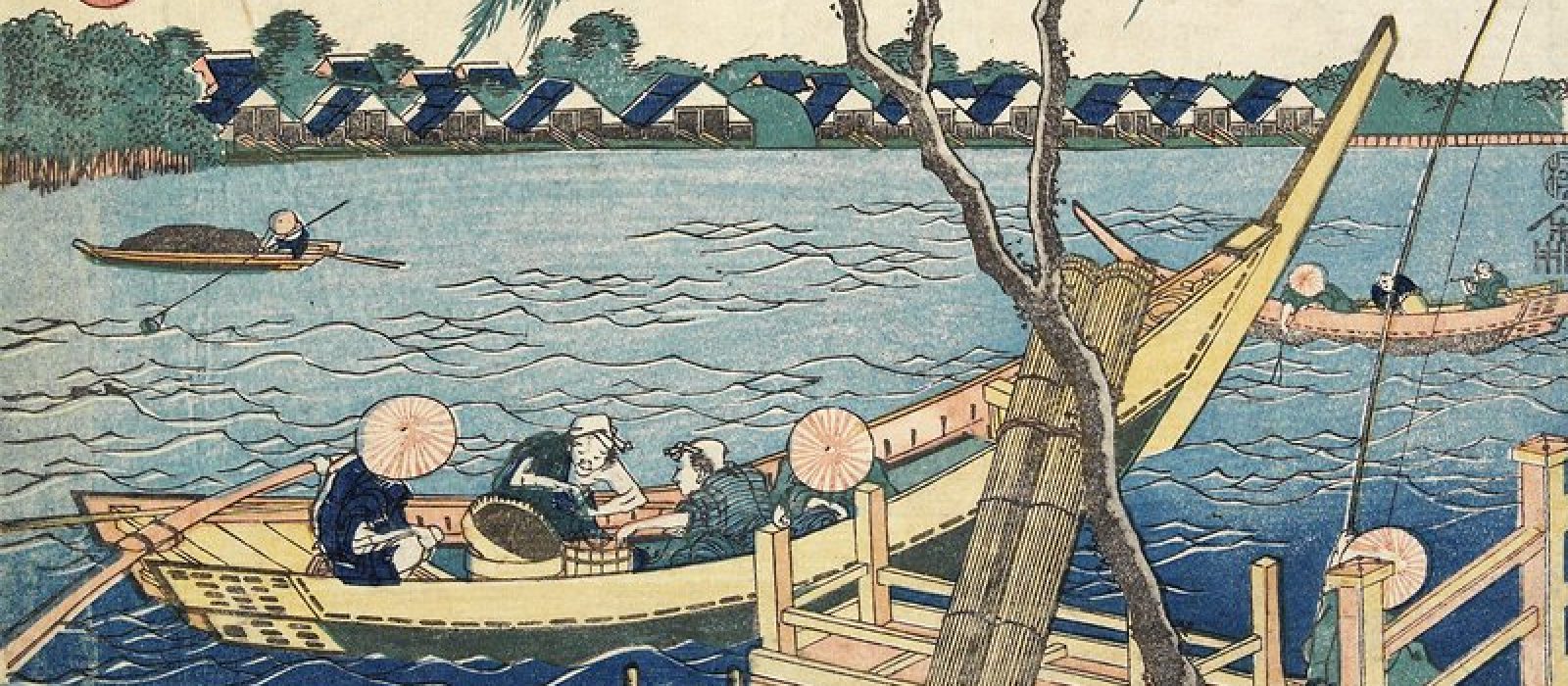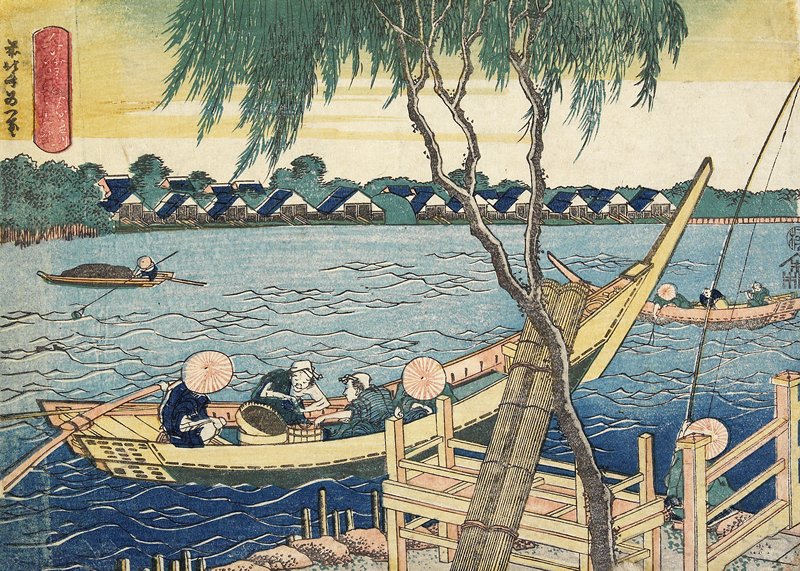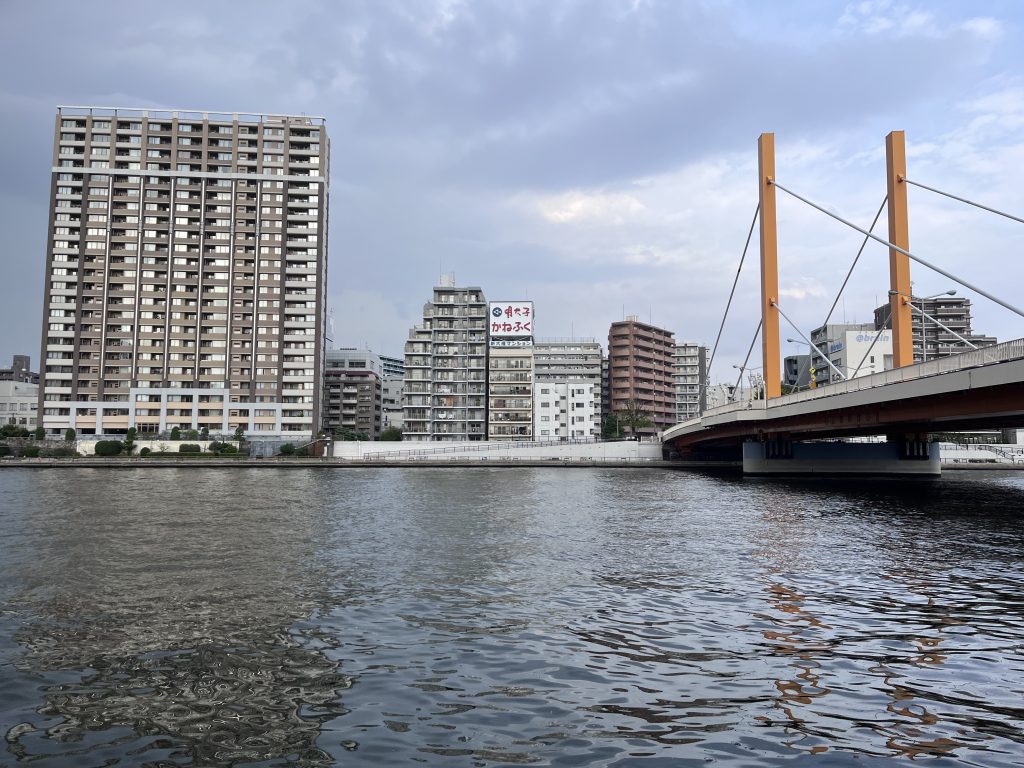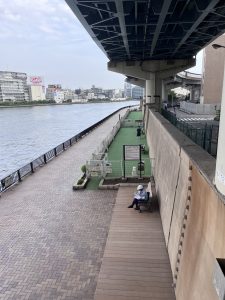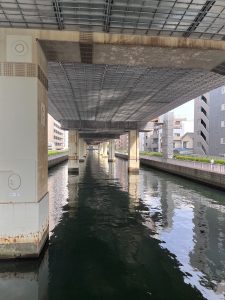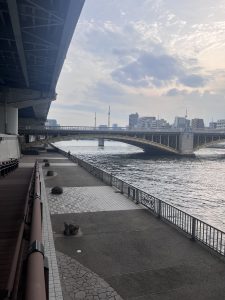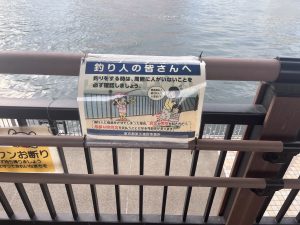The first day back in Japan, I stay at a small apartment right under the Skytree next to the Asakusa district. The sky tree is not a real tree. Asakusa translates to soft grasses that once grew here in the plains spanning from Mt. Fuji to the sea. I suspect this will not be the first time that names of objects, buildings, and cities to reference the natural world and evoke something, something that has long since vanished. The concrete of the buildings reflects the heat and the air stands still, sticky and hot, between the street valleys. No birds, only cricket sounds.
I am curious to explore what this means. Is it a longing? Is it an attempt to rediscover a vital memory of the past? What does it do to see a concrete cityscape of thirty-million people in the 21st century and think of the swaying of green grasses?
In this Hokusai print, four people are on a boat on the river. A willow tree in the front rustles in the wind. There are some currents, but it is not too wild. Two of the men are engaged in long rope fishing, a technique where one lowers many fish hooks from a main line into the water. The other two men on the boat are dressed more elegantly; they appear be townspeople interested in the joys of the river. At the waterfront another person is fishing with a rod. Some boats in the distance carry goods. The atmosphere is tranquil.
It is impossible to locate the Miyato River nowadays. It used to be part of the river basin around Asakusa, now converted into the concreted Sumida River that runs through Tokyo. The woodblock print by Hokusai shows a row of triangular shaped houses in the background; they appear in some of his other works, where they are referred to as the Mifunezo, or the shogunal boathouses. On a monuments of Tokyo map, I find where these boat houses once stood. Even though I have marked the location of the memorial stone on my map, it is hard to find. A tiny park with a toilet holds it, a staircase marks the high climb from the street level to the river embankment. A homeless man sleeps in the shade of trees under his umbrella. It seems quiet enough.
I try to find the exact perspective from where Hokusai painted this scene and cross the river to the other side. There is nothing that reminds me of the tranquil and slow flowing waters from two centuries back. The channel is now clamped and contained between concrete embankments. Highrises and highway bridges enforce the feeling of a landscape where only the river below and the sky above are animated. The colour of the river is dark and somewhat foreboding as a summer storm gathers in the clouds. Along the embankment on both sides is a walking trail where people engage in leisure activities. A road worker is taking a break and writing in a notebook. An older lady sits and relaxes. A few people exercise.
I walk for three kilometres along the river embankment. The city tries to evoke the past with signs of specific Hokusai woodblock prints that were inspired here. One shows a pine tree, by which was known to be a good fishing spot. Just then a young boy walks by with a fishing rod. He throws the hook into the water and gazes into the slight waves. “You come here often?” I ask. “Yes,” he says. “I caught sea brass here once.” Another nearby sign warns passersby not to get caught on fishing hooks, so there must be other anglers here sometimes.
The only natural sight here are some flowerbeds taken care of by the city. Behind them are some benches to sit on. Another warning here reads: Be aware of joggers running by. People may bump their heads into each other when trying to get up.
Background Information
Hokusai reproduced landscapes, trails, waterfalls, craft techniques, geishas, and more with woodblock printing and made illustrations widely affordable to audiences of all classes. One of his prints would cost as much as a bowl of soba noodles. His paintings came to influence European artists such as Monet, Manet or van Gogh. Some of his success is said to be based on the introduction of the new colour pigment from the West called Prussian blue, a blue color with special luminosity, which allowed him to depict especially water and sky in vibrant fashion.
